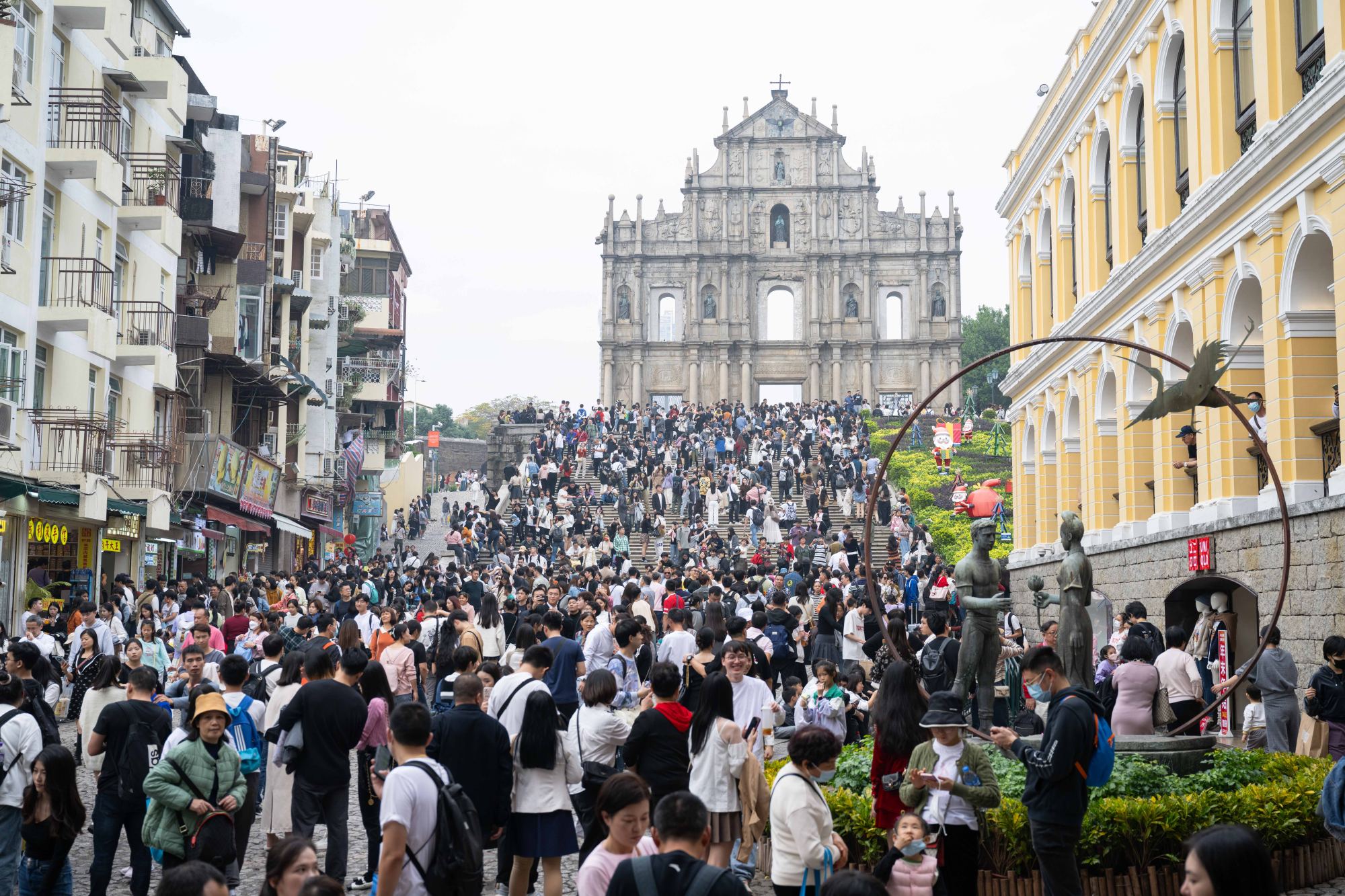Hong Kong’s tourism numbers to return to pre-Covid levels by end of 2025, trailing Macau and other Greater Bay Area cities, new platform forecasts

“The GBA is aiming to become a world leader, a leading [tourist] destination by 2035. However, there are still challenges facing the GBA after the Covid-19 pandemic,” said Haiyan Song, associate dean and chair professor of the school.
They included slow growth in the global economy, especially in mainland China, the effects of inflation on the cost of travel, and tourists’ behavioural changes.
“Accurate forecasts of tourism demand are crucial for policymakers and practitioners to be able to develop sustainable tourism strategies,” added Song, who led the platform’s development.
Hong Kong to attract more top acts such as Taylor Swift, Beyoncé: tourism chief
He said the platform could provide long- and short-term forecasts using government information publicly available, such as monthly incoming tourist numbers, as well as big data analyses by AI from websites such as Baidu, Google and Ctrip.
Song said according to the platform, Hong Kong’s incoming tourist numbers were projected to return to 2018 levels by the end of 2025, while 94 million visitors were expected in 2027. Most – nearly 75 per cent – will come from the bay area.
Macau is predicted to make a full recovery in 2024 along with the other bay area cities.
In 2023, Hong Kong received 34 million tourists – 65 per cent of the pre-Covid level – while Macau welcomed 28.3 million visitors, representing 71 per cent of the 2019 figure.
Hong Kong leader John Lee says big effort needed to draw star performers to city
“Macau never [fully] closed to [mainland] Chinese visitors, apart from a few short periods of shutdown,” Song said.
“But for most of the time, it was still open, and therefore, the momentum has been built.”
The platform also found visitor sentiment on safety and culture in Hong Kong last month achieved a full score of 1, while sightseeing, entertainment, landscape and receptiveness of residents followed closely behind with scores of around 0.9.
However, aspects such as climate and perceived risk received low scores of around 0.2. The city’s food scene also only achieved 0.39, prompting Song to call for better service quality, especially for smaller restaurants.
“The city has a very diverse catering industry, but as we all know at some businesses, the service is efficient but not very friendly … so that’s why the score is slightly lower,” he said.
“Of course, the service quality in many places is very good. For example, hotels and airlines, many fine-dining restaurants, where the service quality is fabulous. It’s just some popular, smaller catering businesses.”
Hong Kong bid to lure more overnight visitors and develop high-quality tourism
Shopping also achieved 0.69, with Song concluding the city’s retail scene remained attractive, despite industry grumbles that post-pandemic business had not bounced back as expected.
“Fewer people coming for shopping does not necessarily mean they are not happy,” he said.
“But then because of the behavioural changes, especially the younger generation, they are looking for more diversity in terms of tourism products and services.”
He added: “Keep up the good job, and you may attract a lot more people coming for shopping in the future.”
Jack Cheung Ki-tang, director of CTS HK Metropark Hotels Management, said the platform would be useful for the industry in predicting tourist behaviour in a time of change.
“It is clear at this point travellers nowadays are looking for very different things compared with before,” he said.